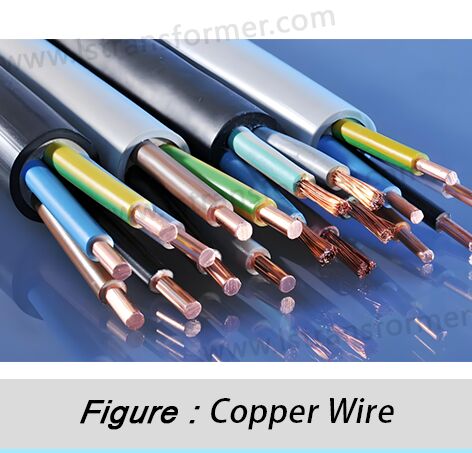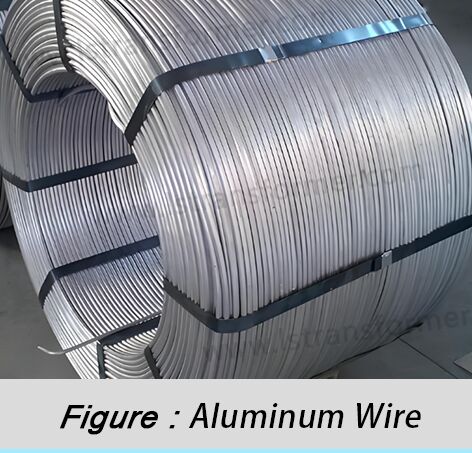Copper vs. Aluminum Windings in Transformers: Balancing Cost, Efficiency, and Lifespan
Copper vs. Aluminum Windings in Transformers: Balancing Cost, Efficiency, and Lifespan
In the manufacturing of transformers and reactors, the choice of winding conductor material is a critical decision that directly impacts performance, cost, and long-term reliability. Copper (Cu) and aluminum (Al) are the two most commonly used conductor materials, each with its own advantages and limitations. With rising global energy efficiency standards (such as IEC 60076 and IEEE C57.12.00) and fluctuating raw material prices, engineers and procurement decision-makers must fully understand the properties of these materials to make optimal choices. This article provides an in-depth analysis of the key differences between copper and aluminum windings in transformer applications, including conductivity, mechanical properties, thermal behavior, cost structure, and long-term reliability, helping you find the best balance between efficiency, cost, and lifespan.
1. Conductivity and Efficiency Comparison
Conductivity is a key metric for evaluating a material’s ability to transmit electrical energy. The International Annealed Copper Standard (IACS) defines the conductivity of annealed copper as 100%, while aluminum’s conductivity is approximately 61%. This means that, for the same cross-sectional area, an aluminum conductor has about 64% higher resistance than copper.
The resistance calculation formula is:
R=ρ×(L/A)
Where:
R = Resistance (Ω)
ρ = Material resistivity (Ω·m)
L = Conductor length (m)
A = Conductor cross-sectional area (m²)
●Copper vs. Aluminum Material Comparison
At 20°C, copper has a resistivity of1.68×10−8Ω⋅m, while aluminum’s is
2.82×10−8Ω⋅m. To achieve the same resistance, an aluminum conductor requires about 60% larger cross-sectional area, significantly impacting transformer design:
Parameter | Copper Conductor | Aluminum Conductor (Equivalent Performance) |
Cross-sectional Area | 1 unit | 1.6 units |
Weight | 1 unit | 0.48 units |
DC Resistance (same length) | 1 unit | 1 unit |
Winding Space Occupancy | 1 unit | 1.6 units |
Table 1: Copper vs. Aluminum Conductor Performance Comparison
In practical transformer designs, aluminum windings require more space, potentially increasing core size. However, aluminum’s density (2.7 g/cm³) is much lower than copper’s (8.96 g/cm³), so despite the larger cross-section, aluminum windings are significantly lighter—beneficial for large power transformers in transport and installation.
●Operational Efficiency
Copper-wound transformers typically achieve 98–99.7% efficiency, while equivalent aluminum designs are about 0.1–0.3% less efficient. For a distribution transformer running 8,760 hours annually, this 0.2% difference can result in hundreds to thousands of kilowatt-hours in additional energy loss, depending on capacity.
2. Mechanical Properties and Connection Reliability
Conductor mechanical properties directly affect manufacturing processes and long-term reliability. Copper’s tensile strength (200–250 MPa) is significantly higher than aluminum’s (70–100 MPa), making copper windings more resistant to electromagnetic forces during short circuits.
IEC 60076-5 imposes strict requirements on transformer short-circuit withstand capability, which copper windings typically meet more easily.
●Connection Reliability
Connection reliability is a major challenge for aluminum windings. Aluminum forms a dense oxide layer (Al₂O₃) with high resistivity, which is difficult to remove. Poor connections can create hot spots, accelerating insulation aging. Modern transformers address this with:
(1)Plating Technology:Tin or silver plating on aluminum conductors prevents oxidation and improves contact resistance.
(2)Special Connectors:Transition metal shims or composite terminals.
(3)Anti-Oxidants:Conductive paste to inhibit oxidation.
Copper oxide (Cu₂O) is more conductive and breaks easily under contact pressure, ensuring more stable connections. IEEE Std C57.18.10-1998 emphasizes connection requirements for aluminum-wound transformers.
●Thermal Expansion Coefficient
The difference in thermal expansion coefficients is also notable. Aluminum’s coefficient (23.1×10−6/°C) is higher than copper’s (
17×10−6/°C), meaning aluminum windings experience greater mechanical stress during thermal cycling, potentially causing insulation fatigue. Modern designs mitigate this by:
(1)Using elastic insulation to buffer thermal stress.
(2)Optimizing winding support structures.
(3)Controlling operational temperature fluctuations.
3. Cost Structure and Lifecycle Economics
●Cost Structure
Material cost is a key factor in conductor selection. Historically, aluminum prices are 20–30% of copper’s, but direct price comparisons can be misleading due to:
(1)Material Volume:Aluminum requires 1.6x the volume but only 50% the weight for equivalent performance.
(2)Manufacturing:Aluminum needs special handling, increasing labor costs.
(3)Transport/Installation:Lighter aluminum reduces these costs.
(4)Energy Loss:Higher resistance increases operational costs.
Cost Item | Copper-Wound Transformer | Aluminum-Wound Transformer |
Initial Purchase Cost | $15,000 | $12,500 |
Installation Cost | $3,000 | $2,700 |
Annual Energy Loss Cost | $1,200 | $1,450 |
30-Year Energy Loss Cost | $36,000 | $43,500 |
Maintenance Cost | $2,000 | $3,000 |
Total Lifecycle Cost | $56,000 | $61,700 |
Table 2: 30-Year Lifecycle Cost Comparison for 1000kVA Distribution Transformers (Example)
●Lifecycle Analysis
A lifecycle cost analysis (LCCA) shows that while aluminum transformers have 15–20% lower upfront costs, long-term energy losses may offset this. U.S. Department of Energy studies indicate that for medium-sized transformers running over 4,000 hours annually, copper’s higher investment typically pays back via energy savings in 4–7 years.
However, aluminum may be more economical in:
(1)Low-load applications (e.g., backup transformers).
(2)Regions with very low electricity costs.
(3)Temporary installations requiring frequent moves.
(4)Weight-sensitive environments (e.g., offshore platforms).
4. Thermal Performance and Expected Lifespan
Transformer lifespan depends mainly on insulation thermal aging, which is influenced by winding temperature. IEEE Std C57.91-2011 states that insulation aging rate doubles for every 10°C increase.
Although aluminum’s thermal conductivity (235 W/m·K) is lower than copper’s (401 W/m·K), its larger cross-section often results in better overall thermal performance because:
Thermal Resistance
While aluminum’s is lower, its larger
can lead to lower thermal resistance, reducing temperature rise and extending insulation life.
However, aluminum windings face higher hot-spot risks due to:
(1)Unstable contact resistance at joints.
(2)Greater skin effect (from larger cross-sections).
(3)Mechanical vibration-induced gaps.
Modern temperature monitoring (e.g., fiber-optic sensors) mitigates these risks. IEC 60076-7 defines the same temperature limits for both materials (typically 65K average, 80K hotspot).
In terms of lifespan, well-designed copper or aluminum transformers can last 30–40 years. Actual differences arise from:
(1)Load Profiles:Aluminum is more sensitive to overloads.
(2)Environment:Aluminum corrodes faster in coastal areas.
(3)Maintenance:Aluminum requires more frequent tightening checks.
In Summary
Copper and aluminum each have strengths in transformer windings. The best choice depends on application priorities:
(1)Copper excels in high-efficiency needs (e.g., data centers, high-frequency applications), space-constrained environments, high short-circuit risk scenarios, and remote areas with limited maintenance.
(2)Aluminum offers lower upfront costs, weight savings (ideal for mobile substations or weight-sensitive setups), and better recyclability, making it suitable for low-load, intermittent-use, or budget-sensitive projects.
Emerging technologies like copper-clad aluminum are blurring traditional boundaries. Decision-makers should combine international standards (IEC, IEEE) with lifecycle cost analyses and consider maintenance conditions and technological advancements to ensure long-term reliability.
Contact Us
LuShan, est.1975, is a Chinese professional manufacturer specializing in power transformers and reactors for 50+ years. Leading products aresingle-phase transformer, three-phase isolation transformers,electrical transformer,distribution transformer, step down and step up transformer, low voltage transformer, high voltage transformer, control transformer, toroidal transformer, R-core transformer;DC inductors, AC reactors, filtering reactor, line and load reactor, chokes, filtering reactor, and intermediate,high-frequency products.
Our power transformers and reactors are widely used in 10 application areas: rapid transit, construction machinery, renewable energy, intelligent manufacturing, medical equipment, coal mine explosion prevention , excitation system, vacuum sintering(furnace), central air conditioning.
Know more about power transformer and reactor :www.lstransformer.com.
If you would like to obtain customized solutions for transformers or reactors, please contact us.
WhatsApp:+86 17267488565
Email:marketing@hnlsdz.com

 EN
EN
 FR
FR DE
DE ES
ES


